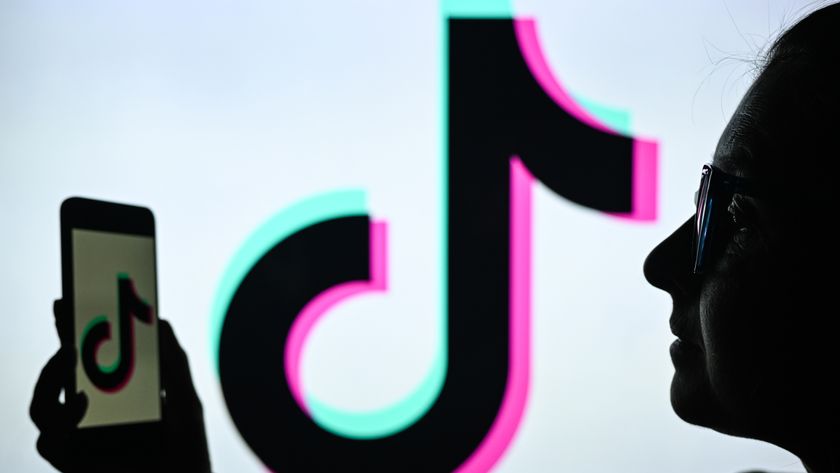Windows 10 for phones vs Windows Phone 8.1: what's new?
Microsoft is getting it right this time
Finally, inbuilt HDR
Something we've been whinging about since Windows Phone 7 launched all the way back in 2010 is the lack of an inbuilt HDR mode. Granted, back then HDR wasn't seen as a priority.
But since then this mode became a staple of any mobile phone photographer looking to jazz up a sunset, or shoot into the sun without it ending up looking like a photo of the rapture. Windows Phone 8.1 does not offer a proper HDR mode in its camera app, but Windows 10 – at last – will.
For those not yet obsessed with HDR photography, it stands for high dynamic range, and involves merging together multiple shots using different exposure settings. The result is that you get more visible detail in the darkest and lightest areas of a picture. As limited dynamic range is one of the issues with tiny-sensor phone cameras, it can improve the quality of your shots no end.
Nokia Maps takes over for mapping
Just as Nokia Camera of Windows Phone 8.1 is going to be rebranded as the camera core of Windows 10 for phones, Nokia's HERE Maps is becoming the mapping engine of the new system instead of Bing Maps.
Back in the early days of Windows Phone, HERE Maps was called Nokia Maps, but it was renamed back in late 2012, as part of the move to bring the system to iOS and Android as well as Windows Phone.
For most current Windows users this won't be a substantial change, because all Nokia Lumia series devices have some version or other of Nokia's maps suite. But yes, once upon a time there were companies other than Nokia that made Windows phones.
The big benefit of HERE maps for those thinking about switching to Windows is that you can download big areas of map data, meaning you don't need a mobile internet connection to find out where on earth you are. Of course, it's already available for Android anyway and is coming to iOS this year.
Get daily insight, inspiration and deals in your inbox
Sign up for breaking news, reviews, opinion, top tech deals, and more.
What's likely to be the longer-term benefit is that third-party apps will use Nokia's maps rather than Bing's, for an all-round better experience.
Skype built into the messaging interface
Microsoft has owned Skype since 2011, and while it works on Windows Phone 8.1 at present, and even has Cortana integration, it's nothing like the sort of deep-rooted relationship we'll see in Windows 10 for phones.
In the next update, Skype is going to be built into the messaging app, meaning it can be used in place of SMS messages between Windows 10 phones. This gives it similar functionality to iPhones' iMessage, where messages are relayed using a tiny package of mobile (or Wi-Fi) data rather than an SMS-style signal, which uses a phone's 2G signal.
As we noted earlier, this means you'll be able to chat to desktop users directly from your phone's SMS app. Unfortunately, Microsoft says it has no plans to integrate other services such as WhatsApp. That's predictable, though – it wants to attract people to its own services, not Facebook's.
Spartan browser takes over from IE

Internet Explorer was once the go-to web browser. But these days it has an image problem. Most people we know use Chrome or Firefox these days, and while Internet Explorer is not bad in its current state, either on a laptop or a Windows Phone device, Microsoft is changing things up for Windows 10.
Windows 10 phones will use the Spartan browser, a brand new web browsing app that claims to be built on a whole new engine.
From what we know of it so far, Spartan seems to be geared towards today's connected world, letting you annotate and share web pages much more easily. It's not exactly hard to share pages in IE, but its design is a little more traditional: more about browsing as a solo activity than something that's part of your social habits.
Spartan will also feature Cortana integration, letting you talk to the Windows digital assistant without it seeming as though it's an overlay, another app running on top.
Keyboard gets a joystick
One last important change in Windows 10 for phones is perhaps the least glamorous, but the one you're likely to notice and use most often. Microsoft has jammed in a little joystick to the bottom-left of the virtual keyboard to make it easier to correct your mistakes.
In Windows Phone 8.1 you have to press down on the touchscreen, on the text itself, to try and pinpoint the bit you want to change. It's a bit fiddly. Hopefully this little joystick will improve what is already one of the best keyboards among mobile phones.
When is Windows 10 for phones coming?
There's plenty of good change ahead – and not long to wait, with the first builds of Windows 10 for phones due to start shipping in February.
But don't get too excited. These builds are designed for developers, to help them get their apps primed for the consumer arrival of the system. At present Microsoft says that'll happen "later in the year." Nice and clear, then.
Microsoft doesn't tend to feel the need to rush out software shortly after its announced, so don't expect to see Windows 10 phones within the next few months. Plan for mid-to-late 2015 and you won't be disappointed.
There is good news, though. Microsoft says that all phones currently running Windows Phone 8.1 will get the update to Windows 10. After the way in which Windows Phone 7 users were all but cut off back in 2012 with the announcement of Windows Phone 8, it's a relief to know that Microsoft is getting it right this time.
- While we wait for Microsoft to get Windows 10 into the world, check out our list of the best Windows phones available right now
Andrew is a freelance journalist and has been writing and editing for some of the UK's top tech and lifestyle publications including TrustedReviews, Stuff, T3, TechRadar, Lifehacker and others.











